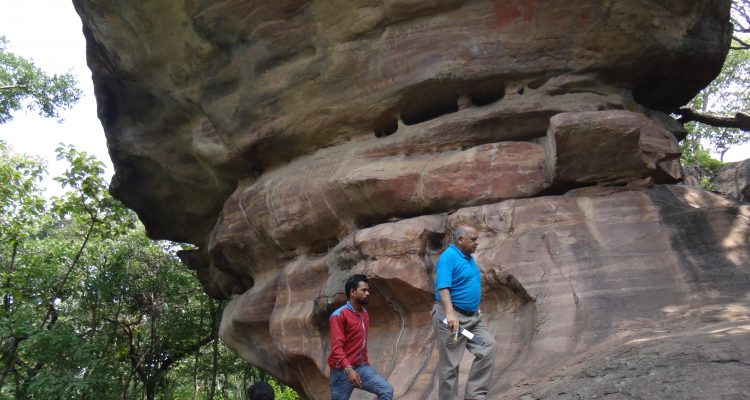Abstract: This lecture is my humble tribute to my revered guru, the late Padmashri Dr V.S. Wakankar, the doyen and founding father of rock art science in India. I am grateful to RASI and its authorities to provide me this great opportunity. Mostly rock art sites are located in a serene environment of nature. To explore and fathom them is a challenge. Only those with an adventurous and creative spirit and great passion to achieve the goal can meet this challenge. Rock art sites are one of the best testimonies of the human spirit, and reflect the timeless qualities of passion, adventure and creativity needed for any society at any time to progress and live a meaningful quality life. Thus, rock art sites have been a great source of inspiration for humans, right from the beginning and will continue to do so in future also.
The recent developments in rock art research indicate that for scientific investigations and understanding of rock art we have to follow the evolutionary model instead of the European model. The EIP Project has proved it in an effective way and brought a paradigm shift in rock art research. It has proved that the earliest rock art in the form of cupules and linear petroglyphs was created in Lower Palaeolithic, and largely the modern construct of human cognition might have developed during the reign of Homo erectus, and that Asia, specifically India, not Europe was the cultural hub of the cognitive evolution and cultural development of the humans at that time. It has happened for the first time in the 100-year history of archaeology and is slowly changing the mindset about the cognitive evolution and cultural development in the world.
Wakankar’s dream to establish the early antiquity of Indian rock art was more than fulfilled. Now India has become the pioneering country in the scientific study of early petroglyphs and the world has started paying attention to Indian rock art with curiosity, interest and respect, a dream Wakankar was trying hard to accomplish throughout his life.
Secondly, protection of rock art sites is a great task and government alone can’t meet this challenge properly. Can we develop a mechanism for public-private partnership, and someone from our side may play a role of liaison between them for co-operation. ASI and RASI can work together in this direction, so can other departments also.
For details please see full paper.
Dr Giriraj Kumar
Prof in Indian Culture and Rock Art Science
Faculty of Arts, Dayalbagh Educational Institute Dayalbagh, Agra-282 005. India
Email: girirajrasi.india@gmail.com


Leave a Reply